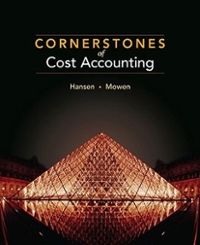tax
STATEMENT I. Margin fee is a tax. STATEMENT II. Custom's duty is a tax. O a. 1st statement is correct; 2nd statement is incorrect. O b. 1st statement is incorrect; 2nd statement is correct. O C. 1st statement is correct; 2nd statement is correct. O d. 1st statement is incorrect; 2nd statement is incorrect.STATEMENT I. One of the essential characteristics of a tax is it is unlimited in amount. STATEMENT II. A tax is generally unlimited because it is based on the needs of the state. O a. 1st statement is correct; 2nd statement is incorrect. O b. 1st statement is incorrect; 2nd statement is correct. O c. 1st statement is correct; 2nd statement is correct. O d. 1st statement is incorrect; 2nd statement is incorrect.STATEMENT I. Provisions in the Philippine Constitution on taxation are grants of power. STATEMENT II. Due process of law in taxation in the Constitution is a grant of power. O a. 1st statement is correct; 2nd statement is incorrect. O b. 1st statement is incorrect; 2nd statement is correct. O c. 1st statement is correct; 2nd statement is correct. O d. 1st statement is incorrect; 2nd statement is incorrect.STATEMENT 1. The property taken in police power is destroyed while the property taken under the power of eminent domain and power of taxation are not destroyed. STATEMENT II. In power of taxation, the compensation received is the protection afforded to the citizens; in police power the compensation received is the altruistic feeling that somehow you contributed to the promotion of the general welfare; in power of eminent domain, the compensation received is the just compensation paid for the property taken. O a. 1st statement is correct; 2nd statement is incorrect. O b. 1st statement is incorrect; 2nd statement is correct. O C. 1st statement is correct; 2nd statement is correct. O d. 1st statement is incorrect; 2nd statement is incorrect.STATEMENT 1. Tax avoidance is a form of tax escape. STATEMENT II. Tax evasion is not punishable. O a. 1st statement is correct; 2nd statement is incorrect. O b. 1st statement is incorrect; 2nd statement is correct. O c. 1st statement is correct; 2nd statement is correct. O d. 1st statement is incorrect; 2nd statement is incorrect.STATEMENT I. Taxes may be used for sectarian purposes if allowed by an ordinance.. STATEMENT II. The President can refuse to implement a tax law if it appears to be unconstitutional. O a. 1st statement is correct; 2nd statement is incorrect. O b. 1st statement is incorrect; 2nd statement is correct. O c. 1st statement is correct; 2nd statement is correct. O d. 1st statement is incorrect; 2nd statement is incorrect.STATEMENT I. A tax bill may embrace more than one subject. STATEMENT II. Non-payment of a tax cannot result to criminal liability on the part of the taxpayer, only civil liability.. O a. 1st statement is correct; 2nd statement is incorrect. O b. 1st statement is incorrect; 2nd statement is correct. O c. 1st statement is correct; 2nd statement is correct. O d. 1st statement is incorrect; 2nd statement is incorrect.STATEMENT I. Taxation without representation is not tyranny. STATEMENT II. In the exercise of taxation, the state can tax anything at anytime and at any amount. O a. 1st statement is correct; 2nd statement is incorrect. O b. 1st statement is incorrect; 2nd statement is correct. O C. 1st statement is correct; 2nd statement is correct. O d. 1st statement is incorrect; 2nd statement is incorrect.STATEMENT I. To be exempt from taxation under the Constitution land and buildings must be exclusively and actually used for religious, educational, or charitable purpose, even if not directly. STATEMENT II. Exemptions of non-profit schools are only limited to revenue .and assets derived from strictly school operations. O a. 1st statement is correct; 2nd statement is incorrect. O b. 1st statement is incorrect; 2nd statement is correct. O c. 1st statement is correct; 2nd statement is correct. O d. 1st statement is incorrect; 2nd statement is incorrect.STATEMENT I. A person cannot be imprisoned for non-payment of property tax. STATEMENT II. A law may be passed violating uniformity of taxation. O a. 1st statement is correct; 2nd statement is incorrect. O b. 1st statement is incorrect; 2nd statement is correct. O c. 1st statement is correct; 2nd statement is correct. O d. 1st statement is incorrect; 2nd statement is incorrect
















